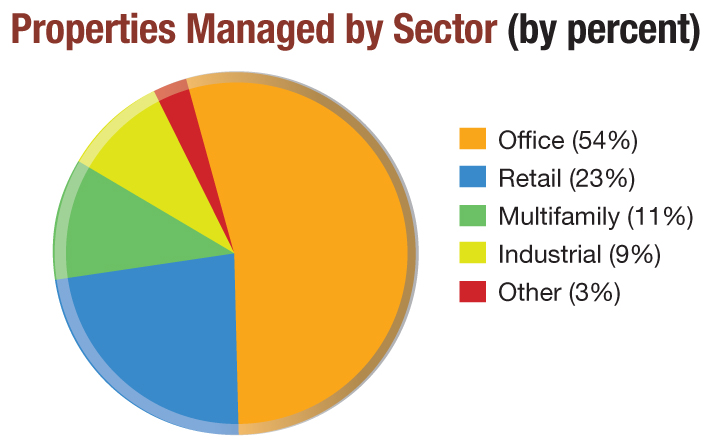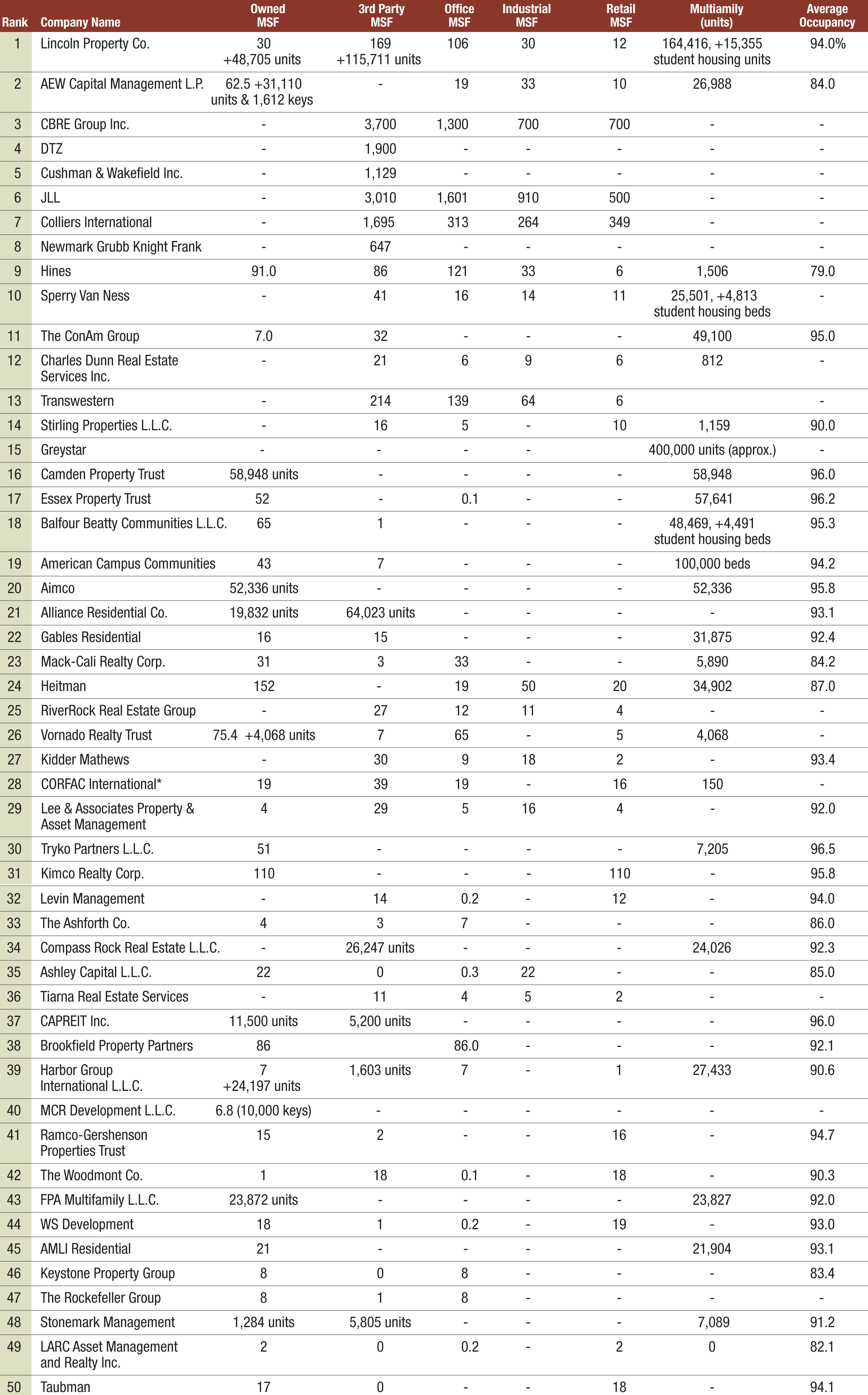2015 Top Property Managers
Property management is about forming long-term, trust-based relationships with tenants and renters, and we salute this list of companies leading the industry on that front.
You can also read our 2019 Top Property Managers, 2018 Top Property Managers, 2017 Top Property Managers and 2016 Top Property Managers rankings.
Building Relationships
A prime location and the newest asset on the block mean nothing without proper property management. The management sector gets a bad rap for not being as exciting or mission critical as the more transactional development, acquisitions and brokerage sides of the business. Property management is about forming long-term, trust-based relationships with tenants and renters, and we salute this list of companies that are leading the industry on that front.
 The number of properties each firm manages increased significantly as the service industry consolidates and owners expand their portfolios. Together these firms managed 151,000 properties in 2014, a figure that represents a 13.7 percent uptick from 2013. If you look back at the change from 2012 to 2013 you will only see a 7.9 percent increase, so portfolio growth is accelerating.
The number of properties each firm manages increased significantly as the service industry consolidates and owners expand their portfolios. Together these firms managed 151,000 properties in 2014, a figure that represents a 13.7 percent uptick from 2013. If you look back at the change from 2012 to 2013 you will only see a 7.9 percent increase, so portfolio growth is accelerating.
On the flip side, we saw average occupancy decrease from 91.9 percent in 2013 to 90.9 percent in 2014. We interpret this decrease in occupancy as a result of the significant amount of new supply in the apartment, office and industrial sectors. The good news is that this slight decrease in occupancy is easily offset by the 7.8 percent increase in average rents seen from 2013 to 2014. There are a lot of apartment managers on this list and we attribute most of the rent growth to multifamily.
Methodology
The 2015 CPE-MHN Ranking of Top Property Management Firms utilized self-reported property characteristics for all firms. We measured square footage, number of leases, number and size of properties under management, property operations owned or managed, participation in property sectors, sustainability practices and other factors. Preference was given to those firms that had strong fundamental growth and provided services to more than one sector.








You must be logged in to post a comment.